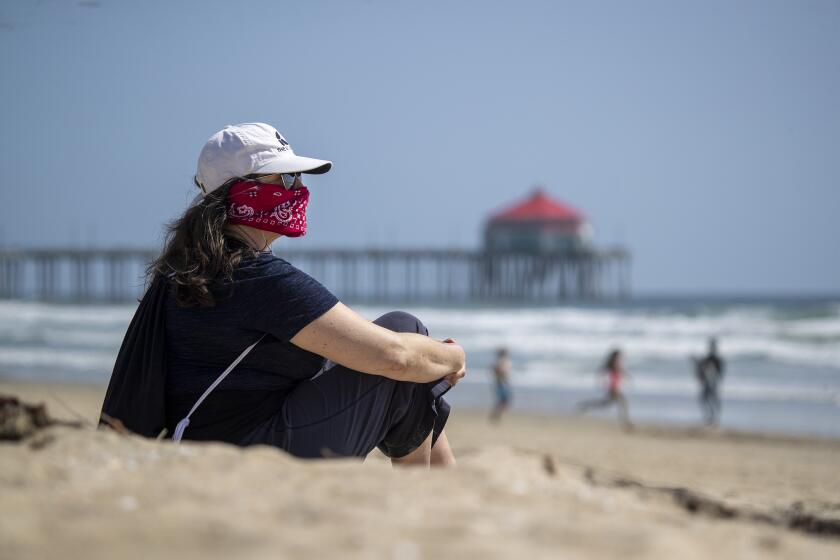Natural Perspectives: A photographic tour of Surf City’s varied scene
While Vic was out on the ocean this past weekend, searching for pelagic birds on a trip with Sea and Sage Audubon, I went to photography boot camp.
Ralph Velasco, a noted local travel photographer, teaches this great refresher course periodically at Calumet Photo in Santa Ana. Ralph also leads frequent photography trips to exotic locales worldwide.
He offers local trips as well, with a day trip to San Diego by train coming up on July 29, and a night shoot of Newport Harbor on July 31. If you visit his website at ralphvelasco.com, you’ll find other trips and lectures.
I signed up for this class because I’ve gotten lazy in this digital age. I have been shooting on auto for so long, that I’ve forgotten how to really use a camera. Also, I keep switching cameras and it’s hard to keep refreshed on how to use each new one that I acquire.
I’m currently shooting with a Nikon P510 and a Canon EOS D30, which have different capabilities and advantages.
A good camera does not make a good photographer. But a photographer who knows how to use his or her camera to the best advantage is going to take better photos.
Ralph went over the exposure triangle, aperture, shutter speed, ISO and histograms. If you don’t know what those are, you need photo boot camp, where all was explained.
“One of the most important things to learn today is to mess with your histograms,” Ralph said. Photographers often refer to that as post-processing. This is where a good digital image can become a great digital image.
During the composition section of the class, Ralph went over some of the elements of composition, such as the rule of thirds, positioning and placement of objects in the image, and filling the frame with the subject.
One of his favorite sayings was, “It’s either in or it’s out.” That means, for example, that if you have a tip of a leaf showing at the edge of a photo, that you need to either move to eliminate it, or include more of is so that it becomes an element of the photo. Too often, photographers fail to move around to get the best angle for a shot, or they include distracting backgrounds.
“Change your perspective and shoot from nontraditional angles,” he said.
He illustrated that point with a photo of one of his students who was shooting straight up at a bridge with the camera resting on the upright bridge support. The result was an unusual composition of rivets and steel beams.
When I visited Ralph’s website to sign up for boot camp, I discovered that he sells an iPhone or iPad app for travel photography. It consists of a shot list that can help you think about and plan your photographs in advance of a trip.
That list got me thinking about the types of shots that one could take on a staycation in one’s own hometown.
If I wanted to create a photo album of Huntington Beach that would convey the nature of our city, what would I include? Using Ralph’s app, I came up with a list of nearly 60 different places or subjects to photograph in Huntington Beach that would define for the viewer what our community is about.
First, I would take some establishing shots, including signage. The pedestrian bridge over Pacific Coast Highway and the “Welcome to Huntington Beach” signs in the shape of surfboards spring to mind.
Then I would take a shot of the city from the pier and another from the Bolsa Chica wetlands. A downtown street scene, a beach scene and action shots of surfers and skateboarders would help define part of what this city is about.
I would also photograph the Bolsa Chica Wetlands and Mesa, Huntington Wetlands, the Wetlands and Wildlife Care Center, Harriett M. Wieder Regional Park, the Urban Forest, Central Park, Greer Park, Carr Park, the native plant garden at Goldenwest College and the Shipley Nature Center.
These places say that we are a people who care about habitats and that we care about our native flora and fauna. That set of photos would include images of the huge variety of birds and marine invertebrates that live here, and maybe a coyote and even a rattlesnake.
Photos of art and architecture, such as City Hall and the metal pelicans and bird murals there, would add to the picture of our community. Places like Newland House would showcase our history.
I would want photos of the farm stands that sell strawberries and Smith Farms on Ellis Avenue where you can buy locally grown organic produce. I would photograph the community garden and the farmers markets downtown or the one on Saturday mornings at Ocean View High School on Warner Avenue. Those photos would tell the story that our community cares about locally grown, organic produce.
A complete portrait of a community would also include its underbelly. I would think about photos of the Southern California Edison power plant, the sewage treatment plant, men waiting for work along Slater Avenue, oil pumps and derricks, off-shore oil platforms and rush-hour traffic on the San Diego (405) Freeway.
Photography boot camp sure gave me a lot to think about.
VIC LEIPZIG and LOU MURRAY are Huntington Beach residents and environmentalists. You can reach them at lmurrayphd@aol.com.
All the latest on Orange County from Orange County.
Get our free TimesOC newsletter.
You may occasionally receive promotional content from the Daily Pilot.



